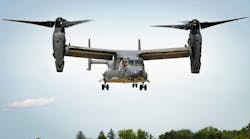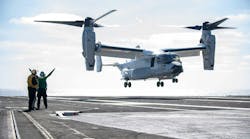The University of North Dakota (UND) in collaboration with the Helicopter Association International (HAI) and the Helicopter Foundation International (HFI) recently completed a study which forecasts the supply of helicopter pilots and mechanics over the next eighteen years. Unless there are some fundamental changes in policy, outreach, scholarships and access to financing, the industry faces largescale deficits in the amount of available and qualified licensed and certificated pilots and mechanics. This lack of human capital could very easily have wider negative consequences on the worldwide transportation industry and global economy.
Regarding helicopter pilots, this forecast indicates there will be a likely cumulative shortage of 7,649 pilots between 2018 and 2036 in the United States alone. While difficult to quantify, this effect will likely extend worldwide. In collected survey data of over 200 helicopter companies and operators, over 50% of respondents are already reporting it has become harder to find qualified helicopter pilots in the most recent year. Over 63% believe it will become increasingly difficult to find qualified helicopter pilots over the next five years; and, over 53% believe their inability to find qualified pilots will likely result in curtailing any growth plans their company may have had.
Aviation mechanics are also forecast to be in short supply in the coming years. Between 2018 and 2036 there will likely be a cumulative shortage of 40,613 certified aviation mechanics in the United States. Over 67% of respondents to the survey indicated they are already experiencing difficulties in finding mechanics to employ. Over 60% report hiring mechanics with less experiences than they hired in previous years, and over 50% report in the next five years the inability to hire qualified mechanics will interfere with their ability to grow and expand. The survey data also indicates similar findings worldwide, with operators outside of the United States already experiencing difficulty finding mechanics, believing the situation will become even more difficult over the next five years, and also believe their inability to find qualified mechanics will interfere with any of their growth and expansion plans.
In addition to the above findings, two other factors where identified in the forecast which could have a large impact on both the pilot and mechanic labor supply. Currently, the United States regional airline industry is in the midst of a pilot labor supply shortage. This shortage was first forecast by UND in 2009, and to date the effects of this shortage have already drastically changed the airline industry landscape. In order to mitigate this shortage, many regional airline operators are offering courses for helicopter pilots to transition to fixed-wing certificates and ratings at the company’s expense. In 2017, three regional airlines alone transitioned 509 outgoing military helicopter pilots into the regional airline pilot ranks. These pilots successfully completed this training at a 95% rate; accordingly, this trend is likely to continue and to increase. Several survey respondents already reported losing helicopter pilot applicants to the regional airlines. It should be noted the 7,649-forecast helicopter shortage did not take into account these pilots transitioning from helicopter to the airlines. So, the actual forecast pilot shortage could grow much larger given this trend.
The other factor is the emergence of civil aviation in China. Currently, there is an estimated population of less than 1,000 helicopters in China. Given the large human population of China and the country’s announced intentions to grow their civil aviation capabilities, including rotorcraft, there will likely be a corresponding need for expat pilots and mechanics from other countries. Although, the exact number of required foreign workers is difficult to quantify, this trend could produce an additional shortage of pilots and mechanics in other countries. This factor is not currently considered in either the helicopter pilot or mechanic supply forecast above.
There are measures that can be taken to help mitigate this coming shortage. First, the industry should engage in more modern outreach techniques designed specifically to target “Generation Z” or the “Digital Natives.” In addition, defined career pathways, similar to what the United States airline industry has enacted, should be customized and emulated. The helicopter community should work with other stakeholders, including the military and airlines, to collaboratively work on solutions. Due to the expense of helicopter flight training, the government, industry and other stakeholders should explore flight-training specific scholarships to help offset financial barriers. In the United States, policy reform should be pursued to help ease the transition from military mechanics to civilian and also lessen the liability surrounding aviation mechanics and their work. Globally, each country should work to gather more robust and accurate data including the number of active pilots, mechanics and helicopters currently in operation.
Finally, as with any forecast, there are risks to its accuracy. This forecast is a “status quo” forecast; moreover, this forecast assumes there will be no industry, government or other stakeholder response. This forecast also relies upon historical data as collected and reported by various government and industry entities. This data may have inaccuracies which could also cause accuracy issues with the overall forecast. The forecast is much more likely to be accurate in the short-term and will have greater variability in the later years. Finally, unforeseen worldwide catastrophes, such as wars, pandemics and global recessions, will also likely alter this forecast.



